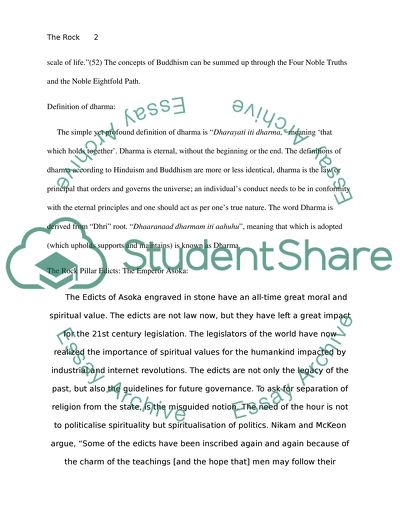The Rock Pillar Edicts: The Emperor Ashoka Essay. Retrieved from https://studentshare.org/history/1588738-the-rock-pillar-edicts-the-emperor-ashoka
The Rock Pillar Edicts: The Emperor Ashoka Essay. https://studentshare.org/history/1588738-the-rock-pillar-edicts-the-emperor-ashoka.


